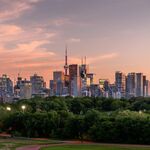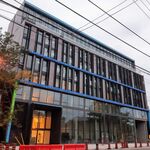For those who have time to read, Steve Munro finally wrote his detailed critique of the Neptis report.
Part 1
http://stevemunro.ca/?p=9508
Part 2
http://stevemunro.ca/?p=9514
Part 3
http://stevemunro.ca/?p=9522
Part 4
http://stevemunro.ca/?p=9537
Munro is a very smart fellow and I won't claim to have ready every single word but I read a good chunk and had the same problem with it I have with much of its stuff, which is how 416-centric the mentality is. He may beg to differ but I see it as a consistent thread. He makes MANY good points about the problems with the report itself but many of his other criticisms are based on his own theories and ideas about how things should be. It's perfectly fair to say that Metrolinx thinks too much about REGIONAL planning not enough about how it works at the local level but others (and I'd include Munro and ESPECIALLY the TTC) think too much about the local and not enough (or at all) about the regional scale. The current rhetorical fight about whether the DRL is a "local" or "regional" project - right down to what it's name should be - shows that this is taking place at about the same level as the national fight to protect "the middle class" and who gets to define what that even means.
There's probably no other individual not working at Metrolinx and/or TTC with more comprehensive knowledge than Munro but my problem remains that that he is emblematic of a kind of protectionist view of Toronto that doesn't entirely recognize the need to integrate what's in Toronto with the rapidly growing inner-905. I'm perhaps stating the case a bit broadly here but I see it particularly in his criticisms of the Vaughan and Yonge subway extensions.
As one example - I'm traveling to Washington, DC next month and noted that their subway system, on pretty much all its lines, leaves DC and goes into the burbs. Compare that with Munro snidely noting, "that York Region came into the [Vaughan Extension] on the basis that the TTC would take all of the revenues and most of the operating costs, and that the Toronto fare zone would be extended to Vaughan. This may not make economic sense, but it is the political arrangement we have inherited. It is likely that York Region expects similar treatment for the Richmond Hill subway, and their citizens look forward to a cheap ride all the way to downtown largely subsidized by Toronto taxpayers." That's the EXISTING funding arrangement but stop looking at the status quo and look more at what makes sense on a regional scale, is my argument. You can't criticize political involvement in transit planning elsewhere and then complain about subsidizing some suburbanites ride. The other side of the border - where York U students from York Region will have to pay a double fare to travel 2 subway stops, is basically dismissed by Munro as York Region's own problem without addressing the basic fact that the current fare structure is unfair to pretty much anyone travelling across any border.
So, either do away with all petty fiefdoms or don't complain. The more he talks about "Toronto transit riders" as if they are different from other transit riders, the more it sounds like so much antiquated protectionism.
I had many issues with Schabas' report and I know a lot less than Munro but I feel like maybe the two of them together could have really put out something more comprehensive and valuable.

(Also, superficially, he says the Spadina extension has been delayed from 2016 to early 2017, which is news to me...)




